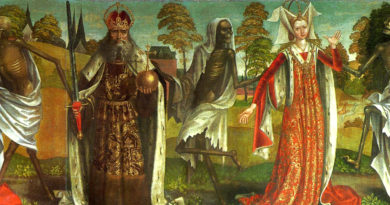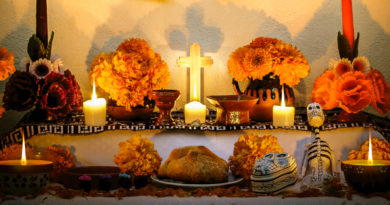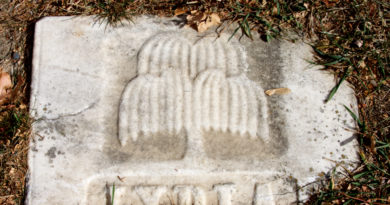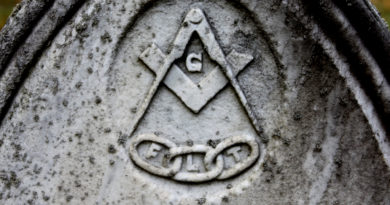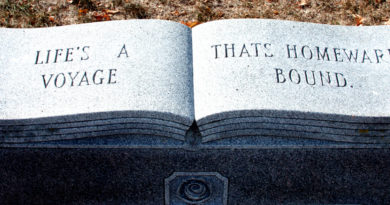Cemetery Headstone Symbols: Shaking Hands
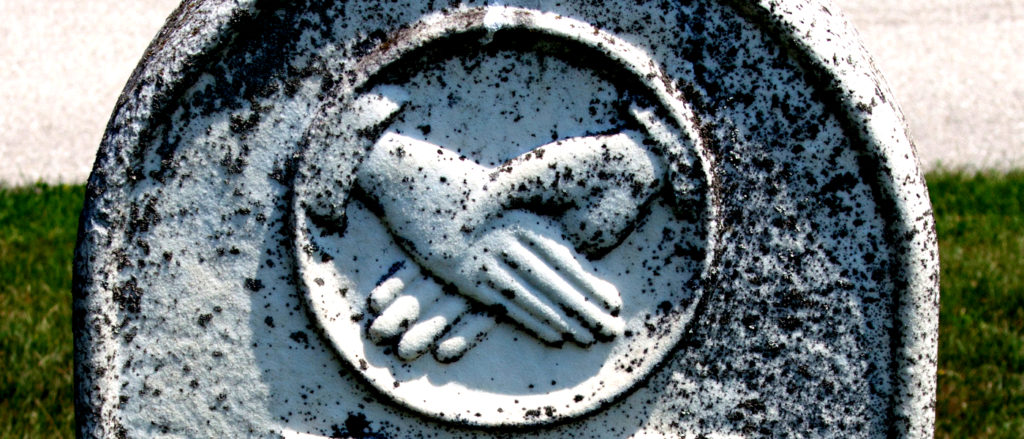
Photo © Chris Raymond
While visiting a cemetery, you might have wondered about a design you saw carved on an old tombstone and what it means. This article explains what a handshake or two clasped hands symbolize, a headstone design found in cemeteries, church graveyards and memorial parks.
The Handshake Symbol
Countless tombstones and gravemarkers found in cemeteries feature carvings of the human hand, but this particular symbol shows two hands clasped together as if in a handshake. The fingers of one or both hands might appear straight or curled around the opposing hand, and the hands might appear identical or different.
Often, a cuff is visible on each wrist, and it’s important to notice whether the cuffs appear the same or different (explained below).
Also, pay attention to whether both hands appear to reach out from the same level, or if one appears slightly higher than the other (explained below).
The Meaning of Two Clasped Hands
Historically, the human hand ranks with the eyes/face as one of the most important and expressive elements of the human form. Generally, hands and/or fingers are associated with creativity, power, war, etc., and many death-related superstitions involve the hand(s).
When seen on a cemetery headstone or gravemarker, two clasped hands on the same level with matching cuffs typically represent:
- A farewell/goodbye to earthly life
- The continuity/unity of life and death as a human condition
- A greeting/welcome to eternal life
- Guidance of the deceased to heaven by loved ones who predeceased him or her
While not necessarily precluding any of the above interpretations, if one hand or one cuff appears more feminine than the other, two clasped hands on the same level with different cuffs and/or a difference in the two hands typically represent:
- The close emotional or spiritual bond between individuals or partners, such as a husband and wife, a mother and child, etc., despite their separation by death
- The continuity of love and affection, i.e., eternal devotion, between individuals/partners even though one of them has died
- A greeting/welcome by an already deceased individual or partner to the newly deceased
- Guidance of the newly deceased by a deceased individual or partner to everlasting life
Again, without necessarily precluding any of the above interpretations, two clasped hands on slightly different levels typically represent:
- A greeting/welcome to eternal life, e.g., the hand of God welcoming or guiding the deceased to heaven
- A greeting/welcome by an already deceased individual or partner to the other
- Guidance by one deceased individual or partner of the newly deceased to everlasting life
As with anything artistic, the meaning of most tombstone symbols rests in the eye of the beholder. Thus, the interpretation of any particular cemetery symbol, or why it appears upon any particular gravemarker, usually proves difficult to determine with any certainty.


